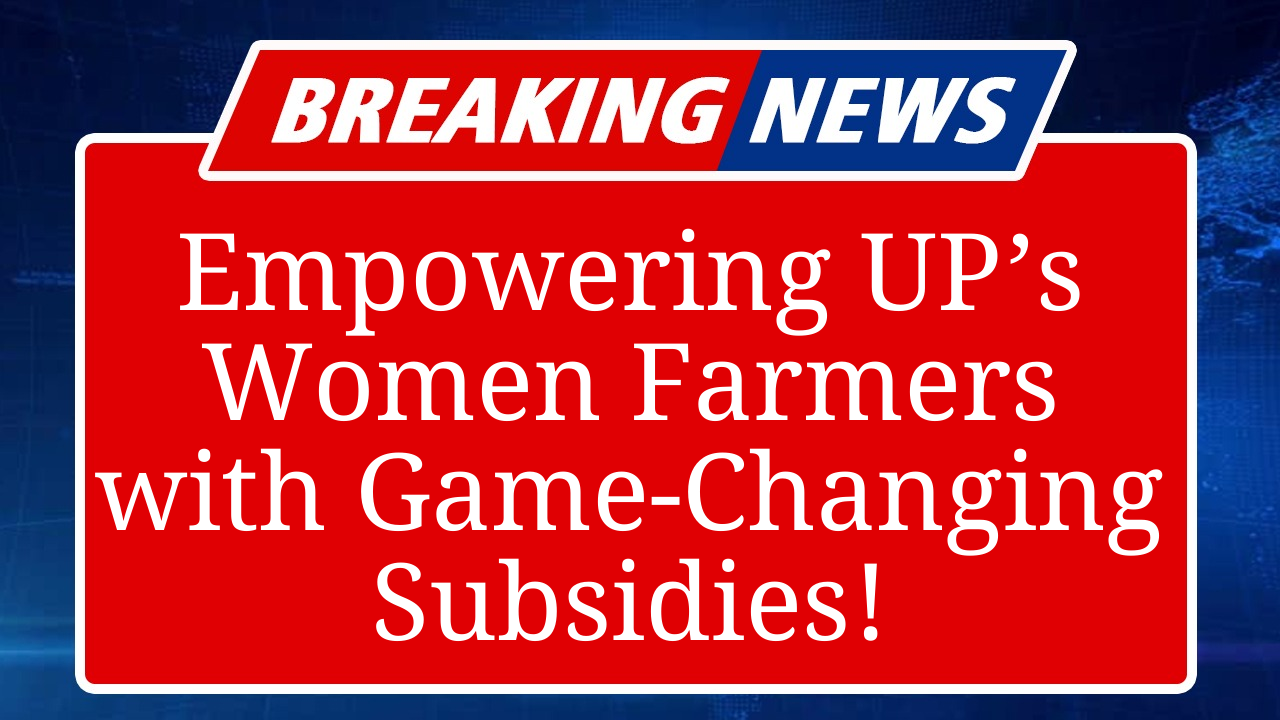“Uttar Pradesh is empowering women farmers through tailored subsidies, including financial aid under PM-KISAN, crop insurance, and mechanization support. These initiatives aim to bridge gender gaps, enhance productivity, and promote sustainable agriculture, though challenges like limited land ownership and awareness persist.”
Uttar Pradesh Empowers Women Farmers with Subsidy Schemes
In Uttar Pradesh (UP), women farmers are increasingly at the forefront of agricultural transformation, supported by a range of government subsidies aimed at fostering gender equality and boosting rural economies. With agriculture employing nearly 80% of economically active women in India, UP’s initiatives are pivotal in addressing systemic barriers such as limited access to land, credit, and technology.
The Pradhan Mantri Kisan Samman Nidhi (PM-KISAN) scheme is a cornerstone of these efforts. Launched in 2019, it provides ₹6,000 annually in three installments to small and marginal farmers, with a significant focus on women. In UP, over 2.3 crore farmers, including a substantial number of women, have benefited from direct cash transfers as of August 2025, according to government data. Proposals to double this payout to ₹12,000 for women farmers are under consideration, potentially impacting millions ahead of upcoming elections.
Another key program is the Mahila Kisan Sashaktikaran Pariyojana (MKSP), which targets women farmers by offering technical training, financial support, and sustainable agriculture practices. In UP, MKSP has empowered women through self-help groups (SHGs), enabling access to organic farming inputs and market linkages. For instance, women in districts like Varanasi and Gorakhpur have adopted climate-resilient crop varieties, boosting yields by up to 15%, as reported by the Ministry of Agriculture in 2025.
Subsidies for agricultural inputs, such as fertilizers, seeds, and electricity, are also critical. In UP, the government provides up to 50% subsidies on high-yielding seeds and fertilizers, with women farmers prioritized under schemes like the National Food Security Mission (NFSM), which allocates 30% of its budget to women in several states, including UP. However, only 14% of women in UP own agricultural land, limiting their ability to fully leverage these benefits, according to the National Family Health Survey.
The Sub-Mission on Agricultural Mechanisation (SMAM) offers 50–80% subsidies on machinery, significantly benefiting women farmers in UP. In 2024, over 10,000 women in the state accessed subsidized tractors and drip irrigation systems, reducing labor burdens and improving efficiency, per the Department of Agriculture. Yet, challenges like inadequate awareness and complex application processes hinder broader adoption.
Crop insurance under the Pradhan Mantri Fasal Bima Yojana (PMFBY) provides a safety net against climate-induced risks. In UP, women farmers in flood-prone areas like Bahraich have reported timely compensation, with claims processed for over 1.5 lakh farmers in 2024. However, weak banking infrastructure in rural UP often delays disbursements, particularly for women without direct access to bank accounts.
Despite these efforts, systemic issues persist. Women farmers in UP face barriers like social norms restricting land ownership and limited access to credit, with only 8.3% of women owning agricultural land, as per the latest surveys. Experts advocate for direct income transfers and simplified registration processes to enhance inclusivity. The state’s push for digital literacy through programs like Sanchar Shakti aims to bridge this gap, training women in digital tools for better scheme access.
UP’s focus on women farmers aligns with broader national goals, with 2026 declared the International Year of the Woman Farmer by the UN. Initiatives like the Nandini Sahakar scheme, offering credit linkages to women-led cooperatives, are gaining traction in UP, with over 500 cooperatives registered in 2025. These efforts underscore the state’s commitment to sustainable agriculture and gender equity, though scaling up remains a challenge.
Disclaimer: This article is based on recent news, government reports, and data from credible sources like the Ministry of Agriculture, The Hindu, and Reuters. Information is accurate as of September 2025. Readers are advised to verify scheme details with official government portals.

